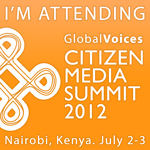Micro Capital blog examines a New Nation article:
According to the article, commercial banks in Bangladesh have begun to focus only on “rich clients” and have reduced attention on rural areas, leading to a “gradual decline” in credit to those areas of the country. The article also cites “exploitation of the poor loan-seekers from a section of micro-credit providers” and a lack of incentives for “small savers” as hindrances to expanding financial services.Another option is of course mobile banking. Bangladesh is well connected with mobile telecommunication networks thanks to the competitive industry and so far they have tapped about 45 million users. A huge portion of them do come from the remote rural areas where even the basic infrastructures like telephone, paved road or electricity are lacking. Mobile banking can really provide them opportunity to avail banking and financial services in their locality without investment in infrastructures like setup of branches etc.
Supporters of commercial institutions would argue that despite the success of the Grameen Bank and other non-profit Bangladeshi MFIs, the fact that Bangladesh’s poor are still without basic financial services points to a need for quicker expansion fueled by profitable organizations. Those opposed to for-profit organizations would contend that commercial institutions ignore the poor and that Bangladesh requires an expansion of non-profit lending in order to benefit the poor.
Funneling money to rural Bangladesh is crucial for poverty alleviation because 80 percent of the countries poor live in these areas and 54 percent of the country is employed in the agricultural center.
The idea of mobile bank is floating and people are trying to make that possible in Bangladesh but they are facing resistance from the traditional banks.
David noticed this:
“Banks, the traditional leader in payment systems, see mobile banking as a new threat if private telecom operators are allowed to use their outlets for money transfer without law,” writes journalist Sajjadur Rahman. I don’t know what he means by “without law”, but I do know what’s behind this quote by a government official: “We won’t let anything, which hurts the banking industry, happen.”
It is a classic example of powerful lobbyists delaying a new technology to protect their industry interests. Mobile banking allows any mobile phone customer to deposit money into his or her phone account at any mobile phone outlet (which are everywhere in countries like Bangladesh) and transfer that money to any other mobile phone user. M-PESA in Kenya has shown how this can bring basic banking services to millions of rural residents who would otherwise never open a traditional bank account.
..Traditional banks in Kenya are irked that Safaricom is able to operate its M-PESA mobile banking service with so few regulations in place. With 2.7 million clients, it may be that M-PESA became too successful too fast and, having learned their lessons, banks in other developing countries won’t allow mobile phone companies to dig into such a large market share.
























0 comments:
Post a Comment